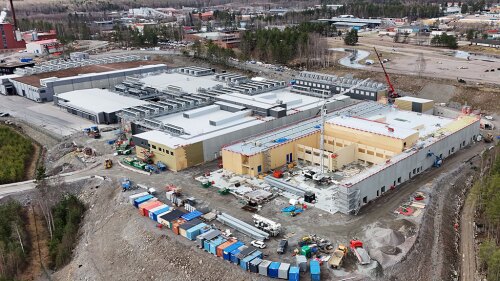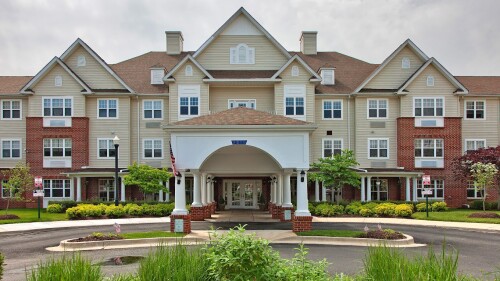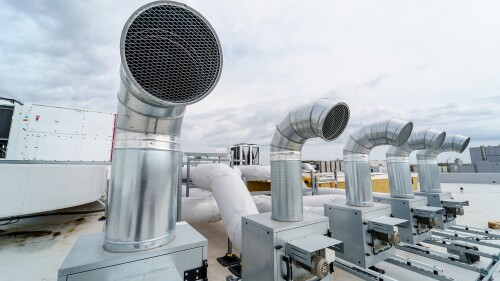What is within our collective grasp may be nothing less than the fundamental revaluation and reinvention of what we mean by the city. It is only within the wider urban context of the life of cities that it becomes possible to address the future of what we may or may not continue to describe as the office.
The lessons I have learned in my 40-year career as an architect specializing in office design can be summarized in three cautionary rubrics: never forget how quickly and radically the world of work has changed over the past four decades; never underestimate the rate at which technological and social change is accelerating; and never assume that offices will continue in their current form as an independent, stand-alone building type.
The genie that we call information technology is now well and truly out of its bottle. Like the air we breathe, information technology is everywhere. Treating workplace design as something distinct from IT is as much a mistake as believing that office technology has no impact on the daily lives and routines of office workers. The design of physical workspaces, of IT, and of cities can no longer be regarded as three self-contained specializations. “Only connect!” as novelist E.M. Forster famously wrote. The challenge for 21st-century space planners, IT providers, architects, and urbanists is to address as coherently, systemically, and imaginatively as possible the challenge of accommodating an extraordinary open-ended, sociotechnical, spatial—and economic—series of phenomena.
This holistic vision is far from the fragmented way in which offices and cities are being designed today. In London and New York City, in Sydney and Singapore, in Dubai and Shanghai, huge hermetically sealed, isolated office buildings continue to be erected in ever-more-iconic configurations. Such architectural fireworks are often justified by architects—to my mind, often spuriously—by referring to sustainable environmental criteria. Much less frequently mentioned are changing technologies, shifting temporal and spatial structures, and the increasingly fluid ways in which many people are already reorganizing their daily schedules, their places of work, and, indeed, every aspect of their lives.
The office is neither a very old nor a very stable entity. The changes taking place today in the world of work are at least as far reaching as those of the Industrial Revolution 200 years ago. Then, over a few decades, landscapes and villages created laboriously over centuries by customs and practices mediated by saints’ days and seasons were effectively abandoned. Emigrant farmers and peasants, driven by the mechanical beat of the industrial drum, exchanged rural ways for the new and what must have been shocking experience of working in dark, satanic mills to the sound of sirens and horns and living crowded together in nearby slums. It was not a pleasant episode in the history of urbanism, I agree, but it is one comparable in scope and intensity to the contemporary—and, I believe, perhaps infinitely more hopeful and liberating—phenomenon of what we will come to call the Information Revolution.
Twentieth-century offices and 20th-century cities must be regarded as transitional because they were shaped, first, by simplistic assumptions about the nature of work inherited from industrial precedents from the previous century, and, second, by what are turning out to be increasingly unreliable notions about the nature and timetable of office work. Until very recently, very few urbanists, architects, or even space planners—who should have known better given their proximity to clients and responsibility to end users—have questioned how long it will continue to be necessary to assemble large numbers of clerical workers in factory-like offices every weekday from 9 to 5. The demand for large office buildings—some magnificent, most much less so, some downtown, others in suburban business parks—is still being calculated by real estate executives and facilities managers on the basis of a very vulnerable and anachronistic assumption: that colocation and synchrony, so important for the design of 19th-century manufacturers and 20th-century office buildings, will continue to be necessary to accommodate the complex, open-ended, and increasingly interactive tasks that constitute knowledge work in the 21st-century economy.
In the early 1980s, the emergence of instant and universal electronic communications began to expose the frailty and transience of this assumption about the nature of clerical work. The rapidity of change in certain sectors of the economy was already spectacular. For example, the entire financial services industry worldwide became globalized in very short order as soon as it became possible to trade electronically 24 hours a day. Huge financial institutions began to do so, shifting money on a 24-hour basis from London to New York City to Los Angeles to Tokyo and then back to Europe at the dawn of a new day.
Initially, the architectural and urban impact of globalization was the opposite of dispersal—for example, the concentration of the financial services industry in a few very large centers worldwide. In London, I observed the opportunity—quickly seized upon by British developers—to construct a large number of huge new office buildings in Canary Wharf and the City to accommodate this process of centralization. Since then, however, things have moved smartly on. By 2010, it has become obvious that information technology—in its emerging, multiple, ever-cheaper, increasingly miniaturized, mobile, and universally distributed forms—provides the capability to connect everyone in any order, all the time, everywhere.
What do these powerful technologies mean for buildings and cities? We are experiencing the possibility of creating, for the first time since the Industrial Revolution, entirely new temporal and spatial conventions. One possible consequence could be the decentralization of everything—home-bound knowledge workers in individual McMansions distributed sparsely over rolling landscapes, connected only by the invisible electronic cloud and the occasional freeway.
Both in urban design and architectural terms, what may actually be happening could be much more subtle and yet equally far reaching—development that is concentrated rather than dispersed, interactive rather than isolated, social rather than introspective, stimulating rather than secluded. What is within our collective grasp may be nothing less than the fundamental revaluation and reinvention of what we mean by the city. It is only within the wider urban context of the life of cities that it becomes possible to address the future of what we may or may not continue to describe as the office.
What the increasing power, reliability, and ubiquity of information technology promises to do is to enable all of us to rethink the utility and value of place in an increasingly virtual world. What can place do that virtuality cannot offer? Universal synchrony and instant connectivity acting together seem likely to dissolve the need for continuous colocation during the working day, thus freeing knowledge workers—i.e., practically all of us, sooner or later—from obsolescent temporal and spatial conventions. This a liberating concept: the life and economy of cities will surely be reinvigorated by more and more people learning to take advantage of increasingly fluid timetables and ever-more-spontaneous and serendipitous connectivity.
If one accepts this optimistic scenario for a moment, what could be the practical consequences for the design and management of workplaces and cities?
The City
Proposition 1: Networks and combinations of mutually supportive commercial enterprises—large and small, generic and specialized, established and embryonic—should be promoted and managed at the urban scale, the success of the whole depending not solely on the sum of the individual parts, but on their interaction.
Proposition 2: The juxtaposition and intermingling of mixed and complementary uses—workplaces, education facilities, clubs, institutions, hotels, homes, entertainment venues, restaurants, bars—should be encouraged. The complementary nature of these activities would attract talent and thus encourage a vibrant knowledge economy. Homogenous use over any area larger than a single city block should be banned.
Proposition 3: The more that mobile ways of working are increasingly taken for granted, the more the business, social, and intellectual value of interstitial urban spaces—e.g., squares, streets, gallerias, arcades, restaurants, and coffee bars—should be realized, following the recognition of the importance of inter- as well as intra-organizational patterns of communication.
Proposition 4: A wide range of degrees of permeability—from free access all day and night seven days a week, to complete privacy—should be controlled, managed, and profited from over time as an essential duty of landlords and the city. Within a plural urban economy, the design and management of the use of space over time should be focused on using and managing permeability to create vibrant and secure combinations of complementary intellectual, social, and commercial activities.
Proposition 5: Continuing development and change of the urban fabric as a whole should be considered to be as important as managing change within individual buildings. Lease structures should be devised and managed in order to accommodate and facilitate a continuing trajectory of beneficial and open-ended collective change.
Proposition 6: High-density use of buildings and spaces over time should be valued as much as underoccupation should be abhorred. For economic and social reasons, the urban fabric should be designed and managed as a whole to be as environmentally sustainable as possible in use over time, as well as in terms of initial specification.
The Office
Proposition 7: Mobile knowledge workers controlling the use of their own time are likely to require in aggregate much less office space, but should use it more intensively over a longer diurnal cycle. Time use surveys amply demonstrate that much office space is currently seriously underused—by as much as 50 percent—during the conventional eight-hour core workday.
Proposition 8: Mixed- and mixable-use space should be highly valued. The probable surplus of conventional office space that will be released through more intelligent space management will be available to be converted to accommodate new uses. New building types and new forms of tenancy should be designed and managed so as to accommodate a wider range of complementary uses.
Proposition 9. Circulation space should be valued more highly than conventional office space. New buildings should be deliberately designed to be less “efficient” than conventional offices in order to recognize the value of encouraging and opening up visible interactions within and between office tenancies.
Proposition 10. Interstitial spaces—within buildings and between floors —should also be highly valued because they will be recognized as having great potential for attracting and facilitating both inter- and intra-organizational interaction.
Proposition 11: Interior space should be as attractive as and considered as valuable as space on the perimeter. Conventional assumptions about the value of external views will be subverted by the connectivity, drama, and excitement to be derived from well-populated, well-managed, and appropriately shared interior spaces.
Proposition 12: Feedback on business performance of all tenants’ businesses should be measured so that office space is never assigned solely on an arbitrary, transaction-based value. Following the precedent of retail space, intensity and value of use should be the primary criteria so that rents can be tied to tenants’ business performance over time. Beneficial combinations of uses—e.g., complementary combinations of larger, conventional businesses and smaller, specialized, value-adding tenancies—should be planned and orchestrated.
Redesigning the Supply Chain
The office as a building type as well as an urban phenomenon needs rethinking because of radical changes in working practices made possible by overwhelmingly superior technology and the emergence of the knowledge economy. One would have expected a more rapid response to the challenge of change from office users, architects, and the real estate community. Why is innovation so badly needed and yet so hard to find?
The answer may lie in the peculiarly refractory and fragmented nature of office real estate practice, particularly in the developer-led, English-speaking world. My conclusion is that after many years in which data-based links have been built up among users of office space, developers, real estate and leasing agents, the relationship between demand and supply has been and continues to be grossly distorted by too much short-term emphasis on deals and transactions rather than on longer-term considerations, such as how office space is used over time and what cumulative impact it has on end users and business performance—or, quite simply, on what office space is for.
What we have instead is a supply chain that starts with money, let’s say in Abu Dhabi, which is passed to a developer, perhaps in London, who brings in lawyers and then the planning consultants, after which the architects and the design team are summoned, who pass the ball to the so-called construction industry. Meanwhile, leasing agents are at work seeking business with corporate real estate departments that, having done the deal, hand the matter on to the facilities manager, who is probably scared of fractious end users and who may or may not bring in space planners and interior designers who very often have their own agenda. This is a caricature, of course, but in my experience, such supply chains do tend, on the whole, to be unidirectional, fractured, unstoppable, and, worst of all, feedback free.
It’s no wonder that so many office buildings are operationally dysfunctional—and that the delivery system in its present form cannot heal itself. The remedy is simple: reintroduce intelligence, purpose, and feedback to the way in which office buildings are procured and delivered.




